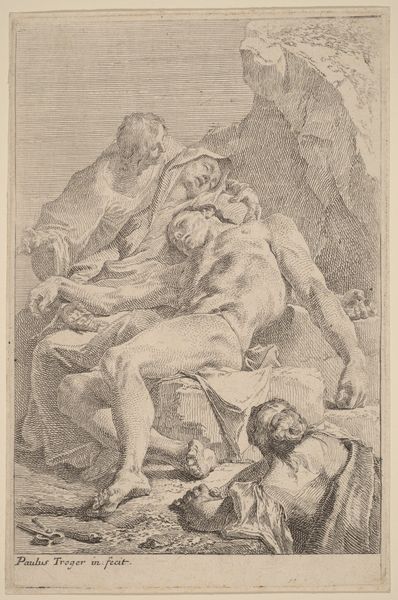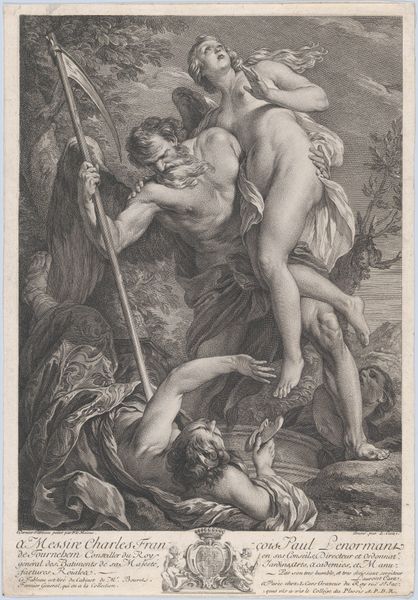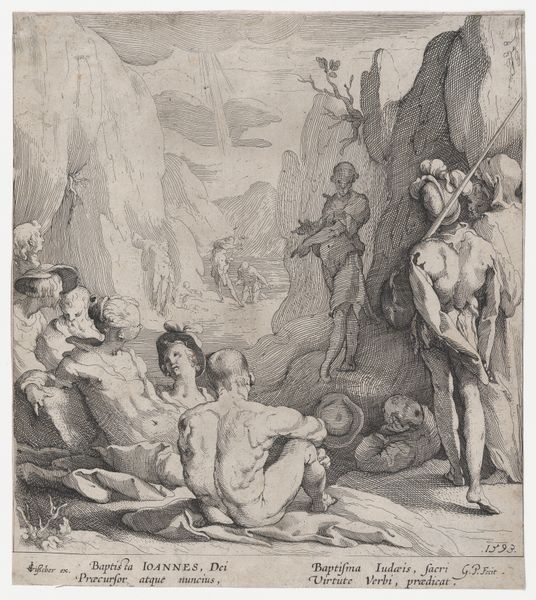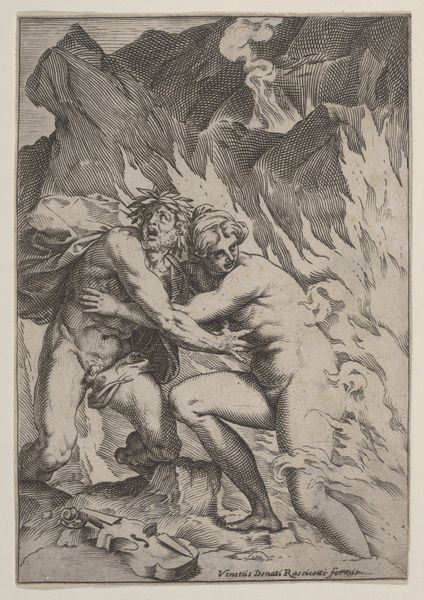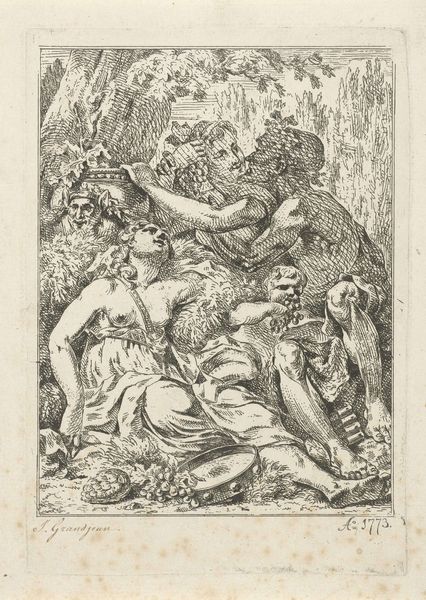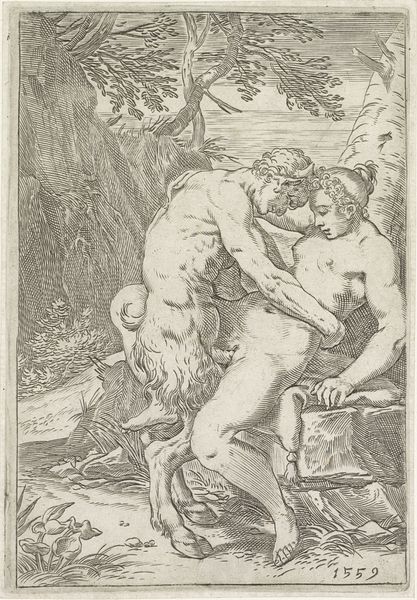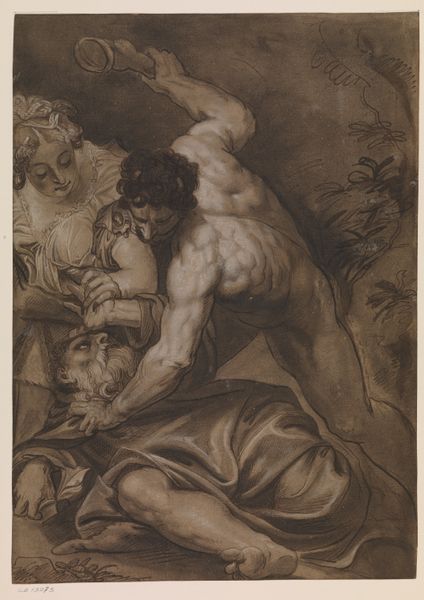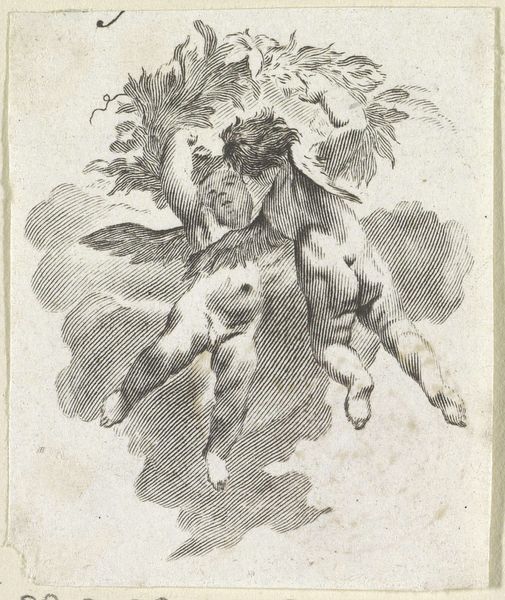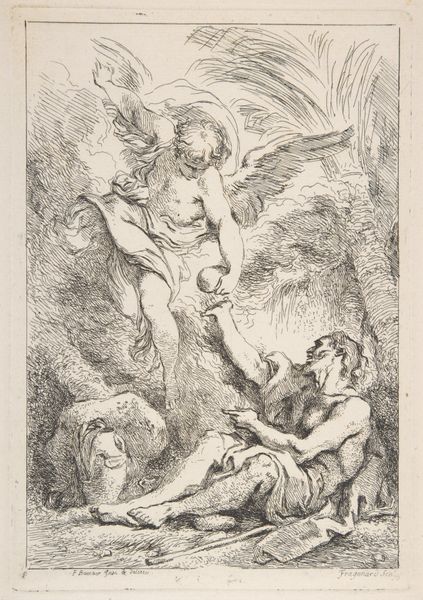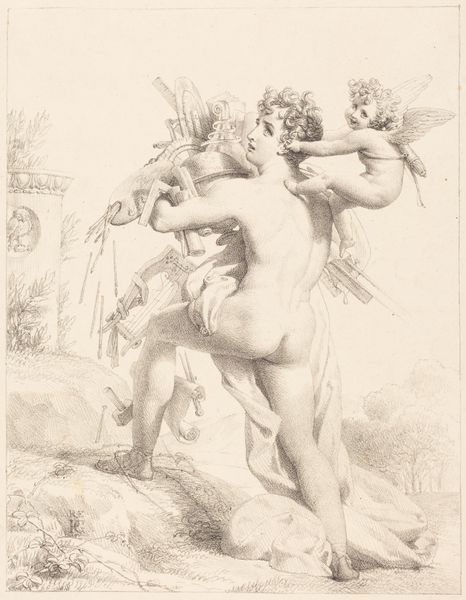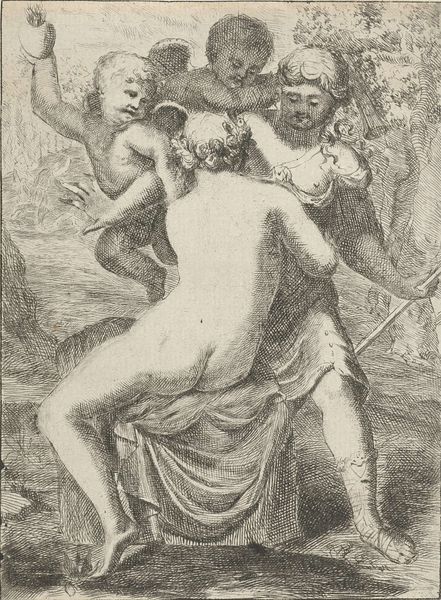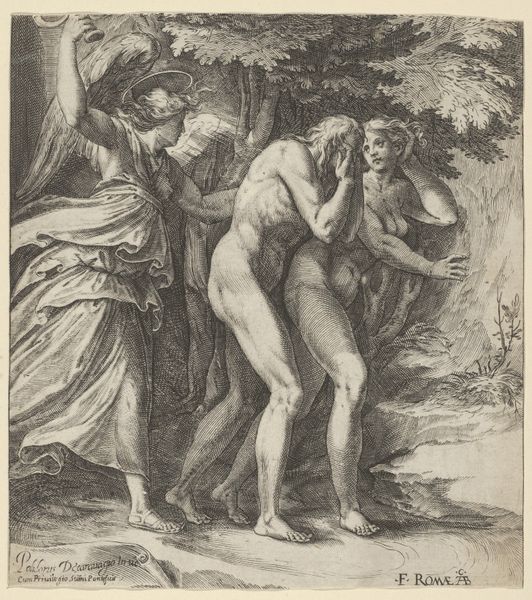
Jealous Monster (from "Fifteen Etchings Dedicated to Sir Joshua Reynolds") 1778
0:00
0:00
drawing, print, etching
#
drawing
#
ink drawing
# print
#
etching
#
men
#
genre-painting
#
history-painting
Dimensions: Plate: 11 11/16 x 7 15/16 in. (29.7 x 20.1 cm) Sheet: 16 x 11 1/16 in. (40.6 x 28.1 cm)
Copyright: Public Domain
Editor: This etching, “Jealous Monster,” by John Hamilton Mortimer, dates back to 1778. I’m immediately struck by the chaotic scene and the rather violent figures clashing in what looks like turbulent water. What do you see in this piece? Curator: I see a powerful, albeit disturbing, commentary on patriarchal structures and the performance of masculinity. Think about the title itself: “Jealous Monster.” Who is this monster? Is it simply the grotesque figure on the left, or is it the embodiment of a system that fuels possessiveness and violence, particularly in relation to women's bodies and autonomy? Editor: That’s an interesting way to look at it. I initially just saw it as a dramatic, mythical scene, but now that you mention it, the power dynamics are hard to ignore. Curator: Exactly. Consider the woman's pose—almost a forced submission. What societal expectations are at play that cast her as a prize to be fought over? How might we link this 18th-century depiction of jealousy to contemporary discussions about male entitlement and control? Editor: So you're saying the print isn’t just illustrating a story; it’s reflecting and possibly critiquing the social norms of its time? Curator: Precisely. Mortimer is using the visual language of mythology to dissect the very real and often destructive consequences of unchecked male aggression and the objectification of women. This work, in a sense, becomes a historical mirror reflecting contemporary struggles for gender equality. Editor: I’ve definitely gained a new perspective. It’s made me think about how even historical artworks can be incredibly relevant when viewed through a lens of social justice. Curator: And that’s the power of art history—unveiling the conversations between the past and the present, helping us to challenge and dismantle oppressive structures.
Comments
No comments
Be the first to comment and join the conversation on the ultimate creative platform.

